July 5, 2013 at 4:12 am
After you’ve seen your third or fourth Maserati cruising the streets of Shanghai, it can be easy to forget that this place is run by something called the Communist Party.
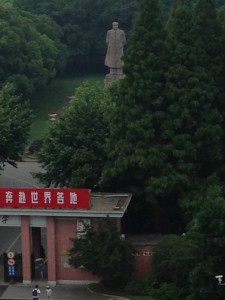
The view from a tenth-floor men's room at Fudan University
And then, one day, you do something mundane, like visit the restroom in the university building where you work. And when you look out the restroom window, Chairman Mao is glaring back at you.
In terms of economic life, almost nothing in 2013 China feels socialist. But when it comes to political power, there’s no question about who is in charge.
By cgschina
|
Posted in Uncategorized
|
July 3, 2013 at 7:10 am
Nice try, guys. 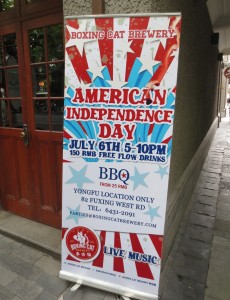
(Read carefully and you'll see what I mean. You can click on the photo to make it larger).
By cgschina
|
Posted in Uncategorized
|
July 3, 2013 at 5:15 am

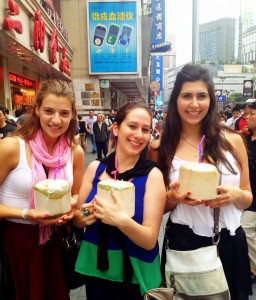 In 1911, citizens of Shanghai hung five-color republican flags along Nanjing Road, in support of the revolution. In 2013, B.U. students drink coconut milk out of--what else?--coconuts on Nanjing Road. The street is now mostly pedestrian-only, and it functions as a bustling tourist and shopping destination in downtown Shanghai.
In 1911, citizens of Shanghai hung five-color republican flags along Nanjing Road, in support of the revolution. In 2013, B.U. students drink coconut milk out of--what else?--coconuts on Nanjing Road. The street is now mostly pedestrian-only, and it functions as a bustling tourist and shopping destination in downtown Shanghai.
The five horizontal stripes on the flags of the republican era were meant to represent the supposed five major groups of people in China: the Han, the Manchu, the Mongolian, the Muslim, and the Tibetan.
By cgschina
|
Posted in Uncategorized
|
July 2, 2013 at 6:18 am
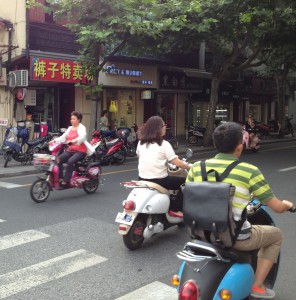 Much has been made, with good reason, about the recent rise of cars and car culture in China. But one of the most striking aspects of the streets (and sidewalks!) of Shanghai is that they are filled with a wide variety of motorized, two-wheeled vehicles. Scooters, mopeds, and bikes--some of them gas-powered, but many more electric--are everywhere. And since many of those electric bikes are both surprisingly fast and nearly silent, pedestrians need to be very cautious.
Much has been made, with good reason, about the recent rise of cars and car culture in China. But one of the most striking aspects of the streets (and sidewalks!) of Shanghai is that they are filled with a wide variety of motorized, two-wheeled vehicles. Scooters, mopeds, and bikes--some of them gas-powered, but many more electric--are everywhere. And since many of those electric bikes are both surprisingly fast and nearly silent, pedestrians need to be very cautious.


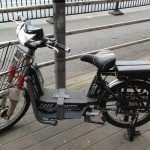
By cgschina
|
Posted in Uncategorized
|
June 30, 2013 at 2:47 am
 That was the address of this house when Dr. Sun Yatsen lived here, in the beautiful section of Shanghai known as the former French Concession. It's now a museum, and the street is now known as Xiangshan Lu.
That was the address of this house when Dr. Sun Yatsen lived here, in the beautiful section of Shanghai known as the former French Concession. It's now a museum, and the street is now known as Xiangshan Lu.
Since we will be discussing the 1911 Revolution in class Monday, I thought I might pay a visit to Sun's former house this weekend. While Sun was out of the country at the time the revolution took place, he is usually cited as the main inspiration for the overthrow of the Qing Dynasty and China's revolutionary twentieth century. It's a small, pleasant museum, filled with memorabilia from Sun's life and career.
It is interesting to note the way Sun is portrayed in this museum. In Taiwan, the national reputation of Sun is straightforwardly heroic; there, he is seen as the founder of the Guomindang and the father of the Chinese republic. Here in the PRC, however, Sun doesn't fit as neatly or easily into the Communist Party's hagiography of revolutionary heroes.
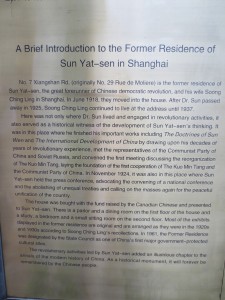
As the tablet pictured at left indicates, the museum emphasizes his "laying the foundation" for cooperation between the Nationalists and the Communists in China, was well as his anti-imperialist call to end the infamous "unequal treaties" that were imposed on China by western powers in the nineteenth century.
Sun's desire to create a functioning Chinese republic never materialized, and when he died in 1925, China was riven by internal divisions and had fallen into a period of control by regional warlords. Yet his memory and career still command respect in both Taiwan and the PRC, though in different ways, and certainly to a different degree.
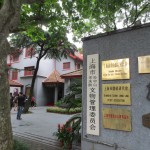
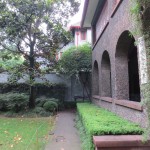
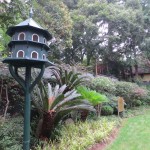
By cgschina
|
Posted in Uncategorized
|
June 28, 2013 at 6:33 am

In their fist week in Shanghai, the CGS students participated in orientation, began their intensive language study, and got a chance to enjoy the beautiful surroundings of Yu Gardens in Shanghai. (And according to their account of events, it didn't hurt that the gardens are located adjacent to some extensive tourist shopping areas).
This is just the beginning of our CGS China blog - many more posts will follow. Please join us on our study abroad adventure in Shanghai.
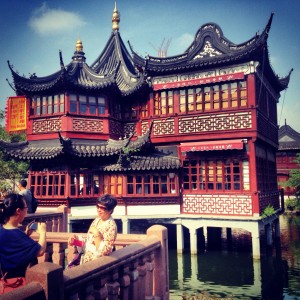


By cgschina
|
Posted in Uncategorized
|

















